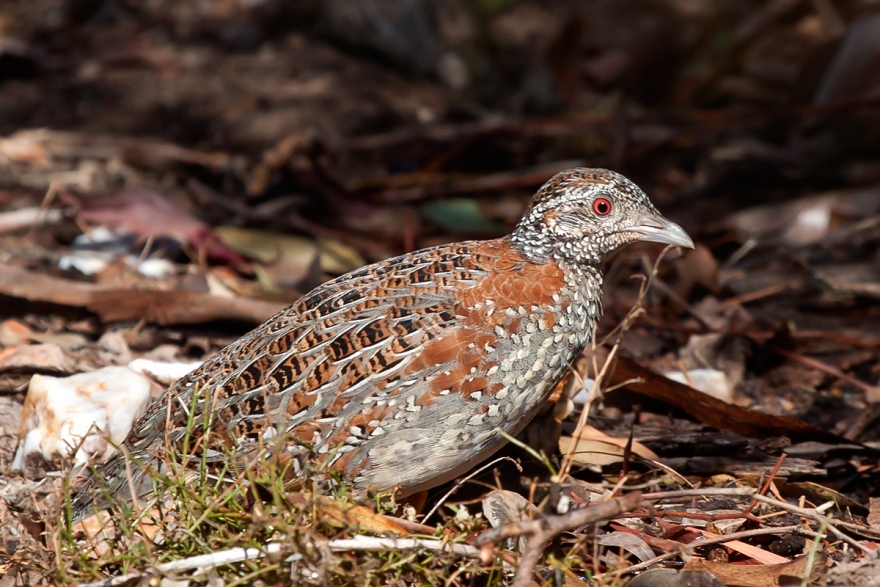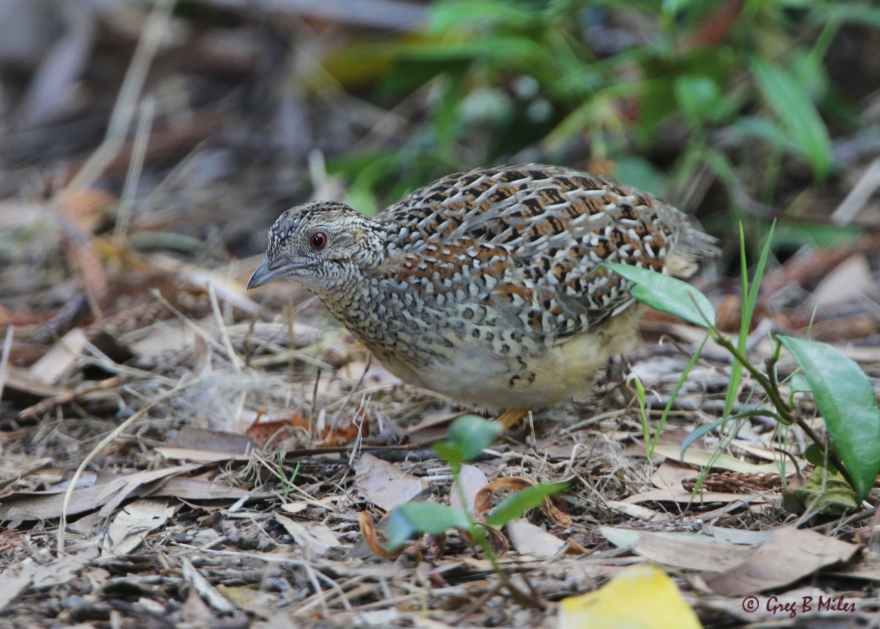Painted button quails are a delightful addition to an aviary. They’re easy to look after, compatible with most finches, doves, and grass parrots, and happiest when they are able to hide amongst tall grass and leaf litter. They’re perfectly suited for a mixed species collection in a large planted aviary!

What is a painted button quail?
Before we go any further, let’s just make sure we’re all completely clear about what quail species we’re talking about. This article is about Turnix varia, which is found exclusively in Australia.
Painted button quail are not king quail. Americans sometimes call king quail “button quail”, while other countries call them “Chinese painted quail”, so it’s no surprise people get them mixed up with painted button quail.
Sourcing painted button quail
Although available in good numbers throughout Australia, painted button quail are vastly less common than king quail. You might need to do a bit of looking around to get a hold of a pair. Bird sales, local dealers, and classifieds websites are all places they’re occasionally seen for sale.
The price of a pair of painted button quail can fluctuate quite a bit in different regions and seasons. You can expect to pay anywhere between $60 and $120 for a pair.

Painted button quail housing & diet
As mentioned earlier, painted button quails should be kept in an aviary and not a cage. They like long grass and lots of leaf litter to scratch around in.
Quail have a bad habit of flying straight upright when they’re startled. In an aviary, this can cause injury and even death. Painted button quail seem to be a bit less jumpy than king quails, but care should nevertheless be taken to reduce this risk.
Feeding these guys is a bit more challenging than the more common quail species. The basis of their diet is of course a high-quality finch or small parrot seed mix, but they also demand a substantial amount of live food. For the first couple of weeks of a painted button quail’s life, it will exclusively eat insects.
Mealworms, maggots, termites, and whatever insects you can attract into the leafy substrate of your aviary are good feeding options. In addition to seed and insects, leafy greens, seeding grass heads and vegetables should be incorporated into their diet.
Breeding painted button quail
One of the unusual things about painted button quail is the gender role reversal in their breeding behaviour. The male is responsible for incubating eggs and raising the young, while the hen does little more than lay the eggs.
Interestingly, the hen is also the larger and more visually attractive of the two genders. In most bird species it’s the other way around.
Once they’ve got a good sheltered spot to construct a nest, and the weather is sufficiently warm, button quail breed quite easily. It may be necessary to seperate pairs from time to time in order to prevent overbreeding, as allowing them to produce more than 3-4 clutches in a year could endanger the health of the parent birds.
Unlike most other quail species, the newly hatched chicks are entirely dependent on their parents—the male in particular—to feed them. They only start feeding themselves, and eating something other than insects, at about 3-4 weeks of age.
After about a month, the young birds are about as large as the adult birds, so it’s essential that you use leg rings to tell them apart.
Closing Thoughts
If you like having small quail living in the bottom of your aviary but find king quail to be a bit too pedestrian, painted button quail might be the right species for you. The only real challenge is finding some.
Where do you find your painted button quail, I rescued one and let it go before realising they it was someone’s pet and it was not wild now I would really want on.